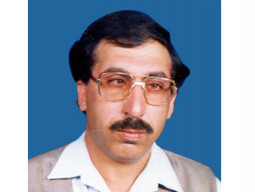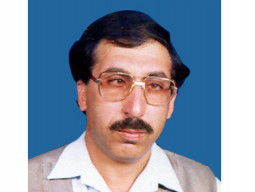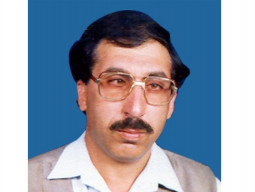
South Asia is not kind to its journalists. A free media is scary for both state and non-state actors, who resort to all kinds of measures to keep it in check. From outright violence to more ingenuous measures, nothing is too dirty to ensure that free flow of information is restricted and journalists extending their ‘brief’ feel the rough end of the stick.
Methods of control vary, but the intention of all players is common: to silence the media, or at least, terrorise it sufficiently to control it. Contrary to popular belief, the danger does not come from the garrulous television channels who speak in one voice, at different levels of hysteria, and can be easily choked by governments at any given point in time, but from persistent journalists who do their job with a certain level of honesty and courage. This is one of the primary reasons why individual journalists are targeted, arrested or killed so that others of their tribe will think twice before reporting the next story that hurts.
In Sri Lanka, the government, after the targeted attack on the LTTE and Tamils, clearly had a lot to hide. And hence, it resorted to full-scale censorship, refusing to let independent journalists from within the country or across the world visit the affected areas. It backed this with direct and indirect threats to the media houses and individuals to ensure that no one stepped out of line. This undeclared censorship has taken a heavy toll with freedom of the press being virtually dead in Sri Lanka. As a result, news of the killings of Tamils and more recently of LTTE commander Vellupilai Prabhakaran’s 12-year-old son have all been broken by a UK news channel and not by journalists within the country. As one of them told this columnist, “it’s not news to many of us, but we do not dare speak”.
In Pakistan, many journalists have been killed but the perpetrators have been rarely caught, with news of these incidents being censored by sections of the media for fear of repercussions. In real terms, there is no censorship, but there are ‘rules’ set out by all the shadowy forces that scribes can violate only at their own peril. A journalist, who shifted cities because of threats, was eventually killed on a visit to his hometown. Some just ‘disappear’ before their bodies are found. Journalism has become a dangerous profession in Pakistan but unfortunately, the hue and cry is limited to some journalistic bodies, with the government and the opposition registering scant concern.
In India, journalists in the northeast, particularly in Manipur, are currently working under threat from insurgency groups. The irony of it is that they have had to obtain protection from the state government that cuts into their freedom, as they cannot protect their sources from scrutiny. In Jammu and Kashmir, every curfew results in a state clamp-down on newspapers that have too often suspended publication for days on end. In other states, the big newspaper and television channel proprietors face pressure from governments and industrialists, who often determine the final complexion of the bulletin. Journalists are arrested in state ‘anti-terror’ drives, with the heat being felt by reporters in the Naxal areas, in Kashmir, and even in cities like New Delhi and more recently, in Bangalore where innocent scribes have been arrested and thrown into jail for months before being acquitted by the courts. This is not to mention the pressure exerted on local media by organised groups, such as the real estate mafia, the mining mafia, the coal mafia and, of course, the underworld in Mumbai.
The internet has changed some perceptions, but even so, India and Pakistan, in their bilateral relations, have still not officially relaxed information and communication in keeping with the modern era. News television channels remain banned, with India not even allowing Pakistan’s entertainment channels to penetrate the airwaves. Technically, customs on both sides can confiscate books and magazines as the law still prohibits these from being carried across the border. Despite the South Asian Free Media Association’s frantic ferrying of political leaders to and from India and Pakistan, neither side has eased travel restrictions for journalists. A former member of parliament from India was detained at the Wagah border for several hours by the Indian authorities because he had picked up a newspaper from west Punjab that had been left there by another traveller and had to prove that he was not trying to take it into Pakistan.
A lot has changed, or has it really?
Published in The Express Tribune, March 2nd, 2013.
COMMENTS (10)
Comments are moderated and generally will be posted if they are on-topic and not abusive.
For more information, please see our Comments FAQ

































































@Vectra
Do you really know who the Author is ? :)
Hiding truth sometimes its need of a nation. Bt for sure i can say hiding is 1000 times better than spreading false news.
N thats what INDIAN medua is better than pak
This blog got its inspiration from that Bangalore arrest. It is very wrong to paint India against journalists. This person just happened to be a journalist. He was assumed to have connections with terror outfits . Even Us have arrested and freed people because they did not have enough evidence. It included people incarcerated in Guantano Bay. At least India accepted and freed this man. Had it been Pakistan, he would have been found dumped with his missing limbs on the roadside. Every country needs to think of seurity of the nation first. Journalists are no doubt very important but fellow Journalists should present both sides of any arrest which did not happen in this case. So, it is a case of failure by Journalists too. Which country would have allowed Nasreena to live or Arundhati to write or say things she chooses to say. I know India needs to improve in giving more freedom to write or say but it is fact that India remains the beacon of journalists freedom in this whole area and all others can merely emulate INDIA.
Thank you, author. I was saddened to know that the condition of journalists is so poor in India. At least in Pakistan, we hear of journalists being killed every day for their beliefs and reportage. In India, it seems journalists are not allowed to report their own deaths! Your brave work will of course be met by fanatical jingoists who will argue that you are again creating false equivalences. Fact is, all equivalences are true. That is why they are called equivalences.
I hv seen many many instences in which journalist/media and print have reported to there own benefit. This happens according to me about 90% of the times. At least where ever I have seen and felt an issue, I read totally wrong or opposite being written in print / media .
This has made me very clear that Journalists are humans too, they need to survive and feed there family as usual so they are eligible to do all that common people do.
So they have to be treated as common citizens too.
@Rajesh
You want author to compare things as per your wishes and desire and not based on facts and reality ?
You are commenting on a Pakistan based newspapers freely this is enough proof that media and journalism is in much better shape and enjoys more freedom in Pakistan than india.
this author is unware about India and its media system and system of working.India media is most free media in the world along with US media.This author and some other pakistani feels that that pakistan cannot gain anything on its own and they have a false illusion that if they associate their name with India they may gain some positive image because of India's reputation in the world. What a cheap article bring in other country to your problem like trying to justify look they are also failed (self belief) so there is no problem if pakistan has become failed.
I think the author naively or simplistically seems to think that journalists in all South Asian nations are muffled to same degree, its like comparing apples with oranges ,in short not objective enough.
Pakistan has now been declared one of the most dangerous places in the world for media professionals by international watchdog bodies. In 2012, seven journalists were killed across the country, five of them in targeted killings
I have yet to read any statistics which could say the same to be true for other South asian nations journalists
Just recently,, South Asian Free Media Association (SAFMA), South Asia Media Commission (SAMC) and Media Commission-Pakistan (MCP) on Thursday condemned the killings of two journalists in one week.
In Pakistan,Journalists even held a protest rally taken out from Chakwal press club on Thursday to condemn the brutal killing of journalist Malik Mumtaz of Miranshah.
According to the press campaign group Reporters Without Borders , Pakistan was the third deadliest country for journalists last year, behind Syria and Somalia, with 10 killed in connection with their work.
Appropriately, Seema Mustafa should have compared Pakistan Journalists on same scale as Syria or Somalia ,an objective analysis is necessary whenever you write an opinion piece.
Didn't realize India was as dangerous as Pakistan.
@Author: OK, let me get it straight. Are you implying that journalism is a perilous affair to the same degree be it Pakistan, India or Sri Lanka? . I have news for you. You are creating a false equivalence. In a case I know about well where a journalist of Deccan Herald and his friend were arrested in a terror dragnet, it is the newspaper that espoused the cause of its journalist. Deccan Herald though it is not well-known to the populace in India is one of the finest news papers in this land and is neck-and-neck with The Hindu. Even thought it is run by Thilak Kumar, it has given prominent attention to the cause of its journalist and we hope his experiences would be printed. The journalist and his friend who were released a few days ago hold no grudges and they feel it was guilt by association because they shared the same accommodation as the others who have plausible cause for arrest. . I hope you will not play the victim card. If you are a victim, then we are too... ... of bad governance.